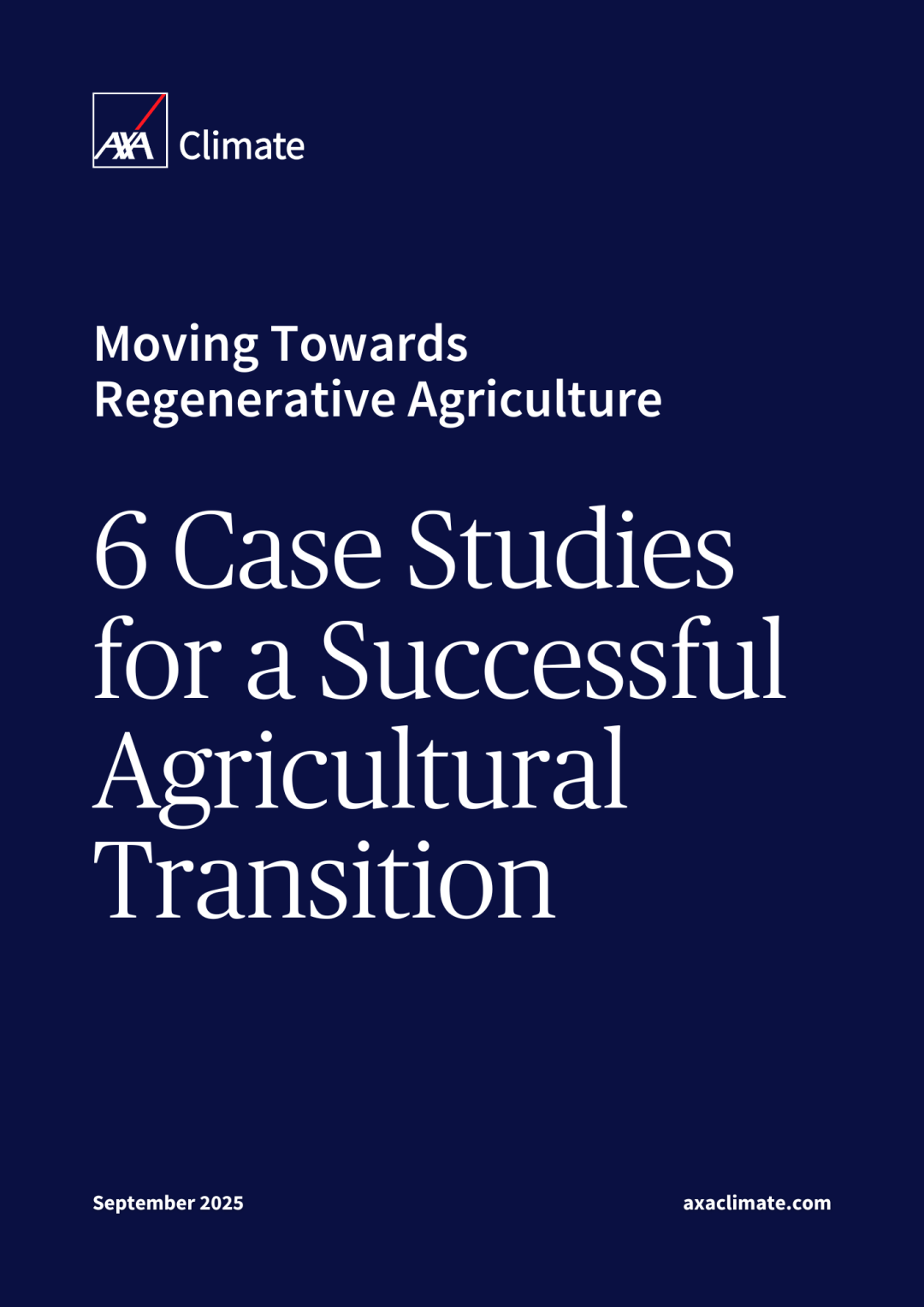By 2050, water availability in France could face conditions similar to those experienced in Spain, southern Italy, or the Maghreb over the past 30 years. In the face of climate change, beyond water scarcity, agriculture will be increasingly exposed to heatwaves, pests, and diseases. Without adaptation, yield losses for key crops such as vines could reach up to 45 percent in the most affected regions.
The agricultural transition is therefore urgent. Yet, it comes with short-term economic risks that can discourage adoption by farmers. To succeed, transition strategies must be both environmentally effective and economically secure.
Six Case Studies to De-risk the Transition
This white paper, structured by AXA Climate, presents six concrete case studies, mainly in France but also in Switzerland, that demonstrate how de-risking tools can unlock regenerative practices.
1. Delaying cover crop destruction – Parametric insurance helps farmers secure winter tillage conditions by compensating if there are fewer than eight favorable days for soil preparation.
2. Phasing out insecticides in rapeseed – The IP-Suisse label encourages farmers to stop using insecticides. While yield losses can reach up to 20 percent depending on pest pressure, market premiums offset the risk, and insurance serves as an additional safety net for the most risk-averse farmers.
3. Complex intercrop covers – Farmers investing in multi-species seed mixes face the risk of drought preventing germination. Insurance linked to rainfall ensures that costly seed investments remain viable.
4. Scaling regenerative programs – the VIVESCIA TRANSITIONS program supports large-scale adoption of regenerative practices such as cover crops, crop diversification, and HVE certification. Tailored insurance compares yields of participating and non-participating farmers within the same soil and climate zones.
5. Reintroducing protein peas – Protein peas are being revived for their role in reducing fertiliser needs and strengthening food autonomy. Given high yield volatility caused by bacterial blight and climate risks, a tailor-made insurance product guarantees farmer incomes up to €900 per hectare.
6. Biocontrol in vineyards – Replacing synthetic fungicides with biocontrol products reduces environmental impact but increases vulnerability to mildew. A hybrid insurance product, combined with a decision-support tool, compensates growers when disease-related losses exceed thresholds.
The key takeaway is clear
The agricultural transition is not a constraint, but a lever for resilience, climate adaptation, and stronger value chains. With the right financial tools, it is possible, measurable, and economically viable.





